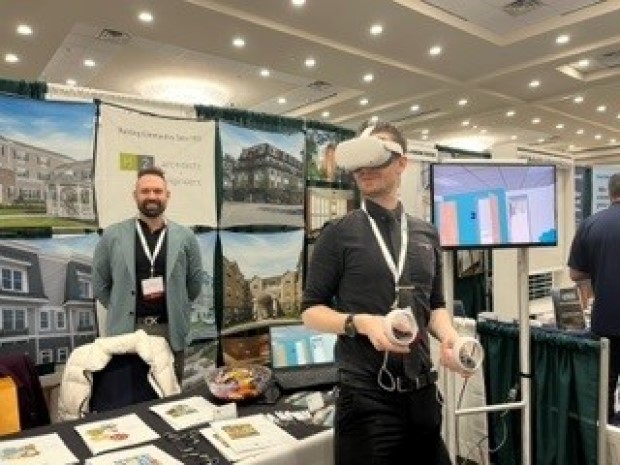H2M architects + engineers is now letting clients use its virtual reality services to “walk” through their buildings long before construction ever begins.
Company executives say the VR technology is a useful visualization tool for anyone unfamiliar with the sometimes complicated art of reading top-down plans and other construction documents.
As a long-time enthusiast of virtual reality, John Rousso, project designer at H2M, is heading up the new service which he says helps any disconnect between what clients are expecting in project design and the designer’s understanding.
“I love when clients say, ‘Oh, that’s what that looks like!’” Rousso said in a company statement. “It’s useful when clients can point out when windows, finishes, or even entire rooms don’t match their vision.”
Rousso estimates that using VR technology to realign client vision with project plans has already saved certain projects tens of thousands of dollars and countless construction days by avoiding changes.
H2M’s VR services were on display at the firm’s booth at this week’s Long Island Builders Institute Expo, which was held at the Hilton in Melville.
“It’s a whole new world of opportunity in client engagement during design,” Richard Humann, H2M’s president and CEO, said in the statement. “Virtual reality technology opens the door to a new way of more efficiently presenting our design work, improving project understanding, and building stronger relationships with our clients.”
VR models are built to-scale and are one-to-one representations of exactly how the end product will look and feel, according to the company. Movement is controlled with a pair of handheld controllers. But for those squeamish about the VR experience, Rousso can navigate through the space for them and then projects what he sees onto a large monitor. That way, clients can then see a three-dimensional perspective of what he sees as Rousso explores each room of the model and they can request changes along the way.
“It’s exciting to see VR technology applied to architecture,” Rousso said. “The better we can engage with our clients in a collaborative design vision, the better the entire project execution process.”
“
Image and article originally from libn.com. Read the original article here.

